Astronauts Begin Complex Spacewalk Marathon to Fix Ailing Cosmic Ray Detector
Astronauts working outside of the International Space Station have completed the first in a series of at least four complex spacewalks to repair a state-of-the-art cosmic ray detector.
Italian astronaut Luca Parmitano of the European Space Agency and astronaut Drew Morgan of NASA got off to a good start on Friday (Nov. 15) on what has been described as the most challenging spacewalks since the servicing of the Hubble Space Telescope more than a decade ago. Over the course of 6 hours and 39 minutes, the two Expedition 61 crew members began the tasks needed to replace the failing cooling system for the Alpha Magnetic Spectrometer (AMS), a $2 billion science instrument that was not designed to be worked on in space.
"We're going to perform what could be considered open heart surgery on this amazing experiment," Parmitano said prior to the start of Friday's extravehicular activity (EVA, or spacewalk). "It's a combination of things that makes this EVA so challenging. You have certainly an access problem ... AMS is in a remote area without handles or locations to hold onto, because it was not made to be repaired [on] EVA."
Video: Watch the Astronauts Begin the Spacewalk Repair
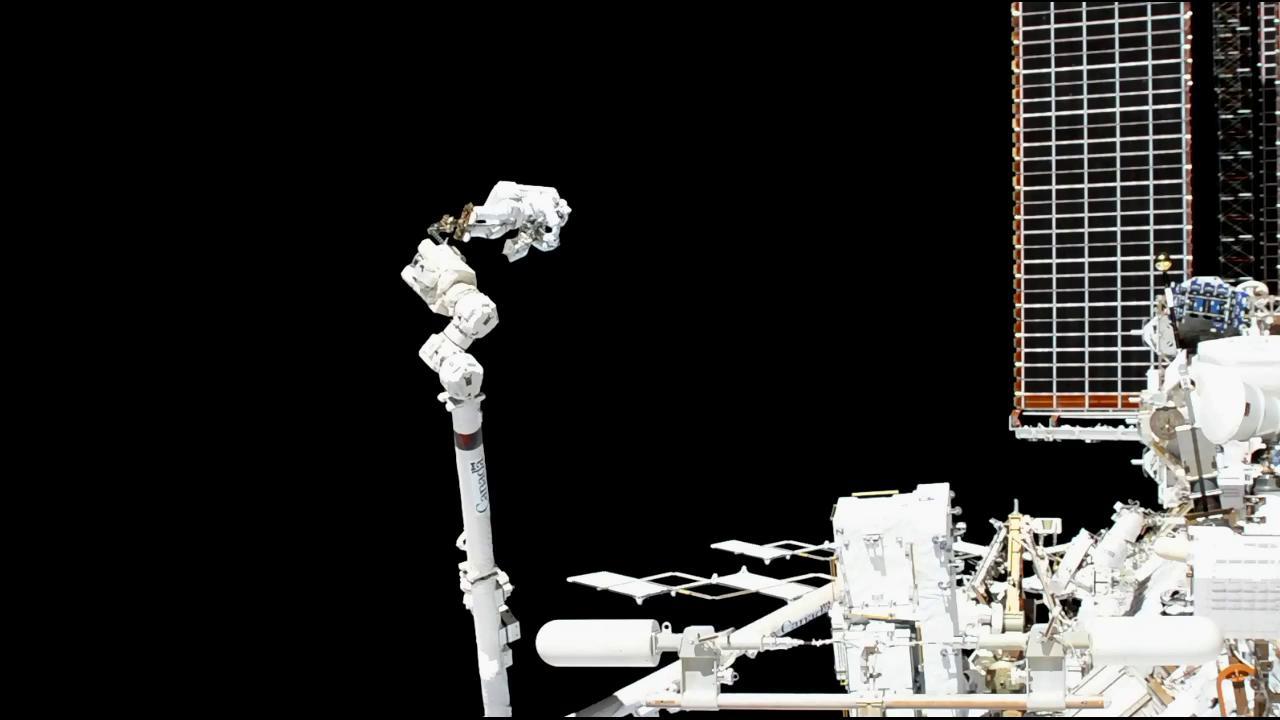
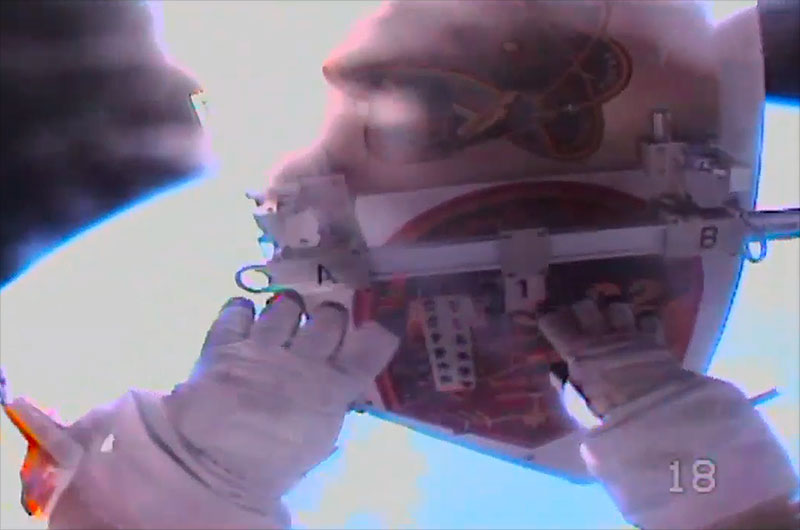
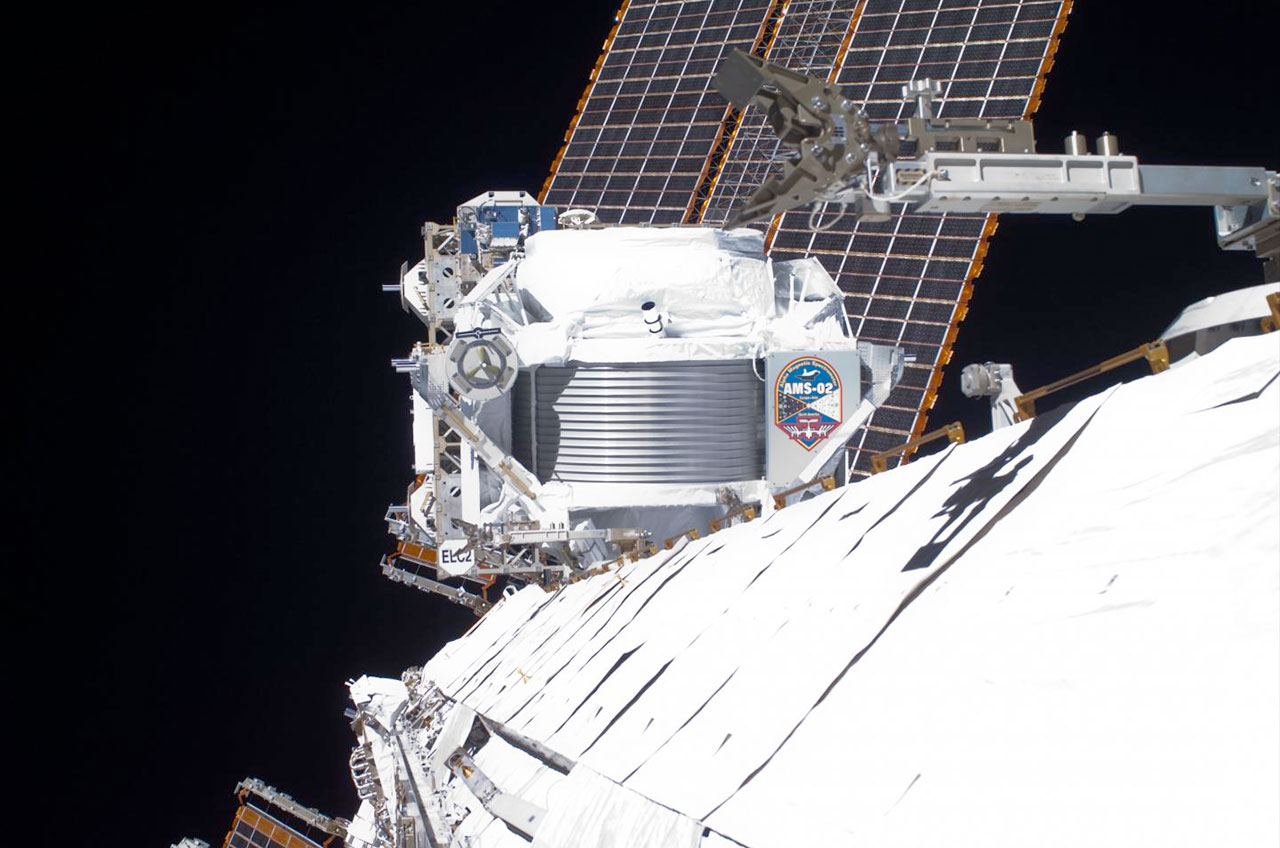
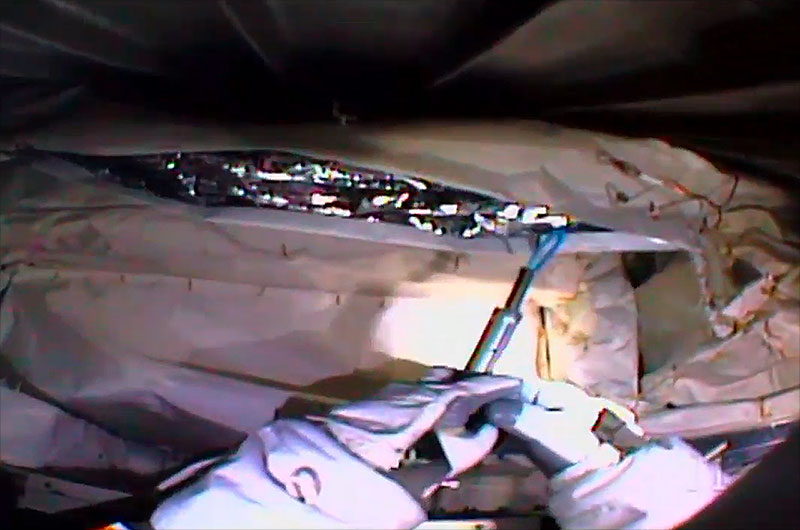
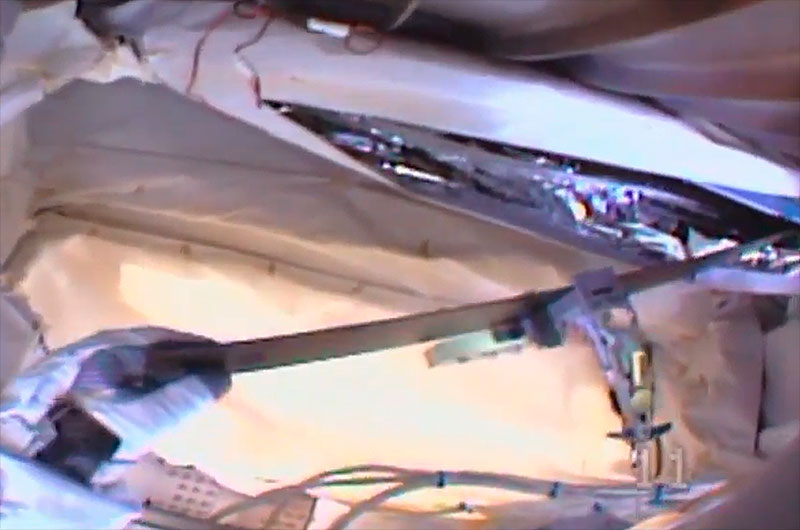
After switching their spacesuits to battery power at 6:39 a.m. EST (1139 GMT), Parmitano and Morgan exited the station's Quest airlock and began making their way to the AMS, which is mounted atop the orbiting complex's starboard truss. As Morgan moved tool bags to the work area, Parmitano rode at the end of the Canadarm2 robotic arm, as controlled from inside the station by NASA astronaut Jessica Meir.
Once he was in position next to the AMS, Parmitano focused on removing a debris shield from the exterior of the instrument. Using tools designed to prevent the fasteners from floating away, Parmitano loosened 13 screws and washers, freeing the shield from the side of the AMS.
"[The debris shield is ready] with a capture block with 10 fasteners and washers, three capture cages, three fasteners and three washers ... and also three pieces of Kapton tape," said Parmitano, describing the shield after his work to release it from the spectrometer.
Breaking space news, the latest updates on rocket launches, skywatching events and more!
"Alright, bonus tape!" replied Canadian astronaut Jeremy Hansen, who served as the capcom (or spacecraft communicator) in Mission Control in Houston.
Parmitano then handed off the debris shield off to Morgan for its jettison. At 50 inches by 25 inches by 7.5 inches (127 by 63.5 by 19 centimeters), the 20-pound (9 kilogram) shield was too large to bring back inside the airlock for its disposal and so it will eventually be destroyed when it falls back into Earth's atmosphere.
"3, 2, 1... release," announced Morgan as he gently pushed the shield overboard in a direction such that it would not pose a risk to impacting the space station.
The debris shield, which was adorned with the emblems of the AMS and STS-134, the space shuttle Endeavour mission that installed the cosmic ray detector in 2011, slowly drifted away from the station at 9:17 a.m. EST (1417 GMT), 2 hours and 38 minutes into the spacewalk.
Parmitano and Morgan then worked on installing handrails to facilitate their work on the spacewalks to follow. The two also removed an insulation cover using a special cutter designed by engineering students to snip zip ties from an area that had previously been covered by the AMS's debris shield.
More: How the Alpha Magnetic Spectrometer Works (Infographic)
Working well ahead of their schedule, Parmitano and Morgan completed all of the tasks scheduled for this first spacewalk in just four hours, leaving them the time to work on get-ahead tasks that had been slated for their next excursion. Parmitano unbolted and then folded back and broke away a carbon composite cover that was insulating a vertical support beam shielding the AMS's coolant tubes.
As before with the exterior debris shield, Parmitano then handed off the 28-inch-long (71-centimeter) insulation cover to Morgan to jettison overboard.
"Another good pitch, good work Drew," radioed Hansen from Mission Control.
The two then worked to remove a spacer from the vertical support beam, clearing access to the coolant tubes, and prepared the replacement of an AMS data cable, before cleaning up and heading back to the airlock.
Led by Nobel laureate physicist Samuel Ting, the AMS was constructed, tested and is operated by an international team of 56 institutes from 16 countries organized under a U.S. Department of Energy Office of Science sponsorship. For the past 8 years on orbit, the AMS has been capturing high-energy cosmic rays to help reveal the nature of antimatter, the unseen "dark matter" that makes up most of the mass in the universe and the "dark energy" that is attributed to speeding up the expansion of the cosmos.
Initially designed to operate for just three years, the AMS has relied on a set of four small coolant pumps to keep its internal systems at their proper temperature. Since 2014, three of the pumps have failed and the fourth was in danger of failing within months. For the past 4 years, NASA teams have been working to plan the now-underway series of spacewalks to install a new coolant system to extend the use of the AMS through the end of life for the space station.
On their next spacewalk, scheduled for Friday, Nov. 22, Parmitano and Morgan will continue preparing the AMS for the addition of the new coolant module by cutting the small tubes leading to the failed pumps. The third and fourth outings, still to be scheduled, will mount and connect the new pumps and clean up the work area. A fifth EVA could be added if more time is needed.
Friday's spacewalk, which ended at 1:18 p.m. EST (1818 GMT), was the 222nd EVA in support of space station assembly and maintenance since 1998 and the ninth this year. It was the third career spacewalk for Parmitano and the fourth for Morgan.
- In Pictures: The Most Memorable Spacewalks in History
- Antimatter-Hunting AMS Experiment in Space (Photos)
- A Space Magnet, Hunting Dark Matter, Turns Up Juicy Secrets of Cosmic Rays
Follow collectSPACE.com on Facebook and on Twitter at @collectSPACE. Copyright 2019 collectSPACE.com. All rights reserved.


Robert Pearlman is a space historian, journalist and the founder and editor of collectSPACE.com, a daily news publication and community devoted to space history with a particular focus on how and where space exploration intersects with pop culture. Pearlman is also a contributing writer for Space.com and co-author of "Space Stations: The Art, Science, and Reality of Working in Space” published by Smithsonian Books in 2018.
In 2009, he was inducted into the U.S. Space Camp Hall of Fame in Huntsville, Alabama. In 2021, he was honored by the American Astronautical Society with the Ordway Award for Sustained Excellence in Spaceflight History. In 2023, the National Space Club Florida Committee recognized Pearlman with the Kolcum News and Communications Award for excellence in telling the space story along the Space Coast and throughout the world.


